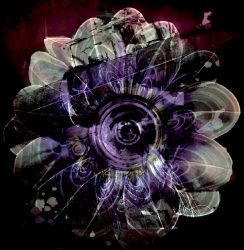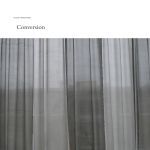Jacob Kirkegaard is well-known for his unusual sonic concepts, “capturing and contextualizing hitherto unheard sounds from within a variety of environments: a geyser, a sand dune, a nuclear power plant, an empty room, a TV tower, and even sounds from the human inner ear itself”.
The sounds he presents are always extremely fascinating, even when heard without knowing about their actual context – but of course it does help knowing where the sounds originally come from.
Capturing the feedback sound from a deserted Chernobyl location may not be easy. This also applies to recording interactive sounds to make the listeners own inner ear play an active part in creating the sonic end result.
But can you imagine concepts like this being translated to a performance of a string ensemble?
I couldn’t.
Scenatet could.
On Conversion – released on Touch as a vinyl-only release (including a digital download) – the Scenatet Ensemble performs two of Kirkegaard’s projects in a musical setting using clarinet, percussion, trombone, violin, viola and cello. Considering the original concept, one would not consider this possible at all, but the result is jaw-dropping – to say the least.
Labyrinthitis II, shortened to nearly 18 minutes (because of vinyl limitations, I guess) translates into sustained string chords, resembling some of Ligeti’s work as used in Kubrick’s classic 2001.
Somehow it feels like it is detached from the original concept completely, but the music stands firm as if it were a completely new composition especially created for this purpose.
Church II – one of the Chernobyl spaces in which the original sound was recorded – starts true to the original recording but slowly, almost unnoticeably, introduces the ensemble section as an extra added, enhanced musical layer – retreating again to make ‘room’ for the original sound recording.
To my ears, this combination of conceptual electronic music with a contemporary classical arrangement is unequalled, beyond competition.
And almost even beyond imagination….



